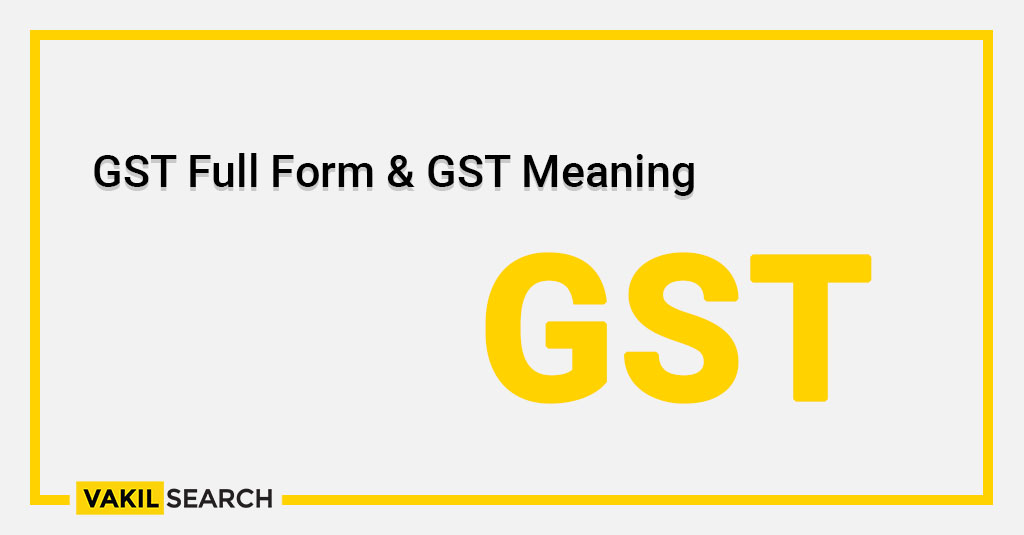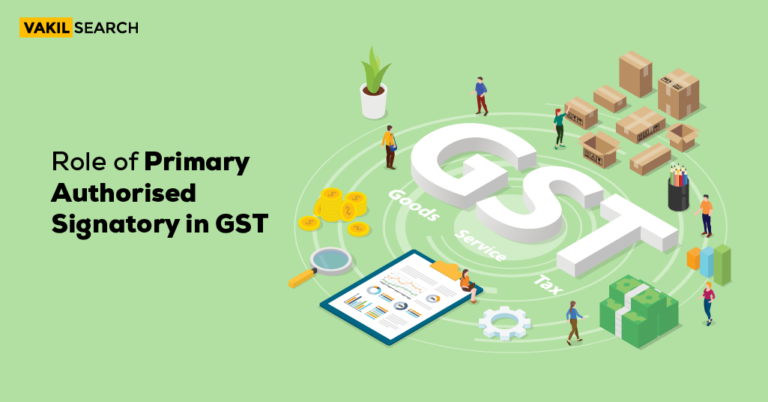Do you intend to learn about GST full form? If yes, then this article is undoubtedly meant for you. Read on to know more GST Meaning in Indian Languages.
GST full form is Goods and Services Tax. The government levies GST on all goods and services under the GST regime. You must understand the history of GST and its various terms to understand this tax regime better. Read this post for more riveting information about the GST regime.
History of GST
The tax system of India before the new GST regime was quite different. It was primarily based on production, with multiple central and state taxes. This system was not universal, and different states had different taxes according to rules.
It wasn’t very clear. As a result, rampant corruption and consumers had to face many issues. Numerous indirect taxes were levied on the consumer before the GST regime, like custom duty, entertainment tax, excise duty, service tax, VAT, etc.
The discussions over implementing the GST regime were intense and lasted long. It was first implemented in our country in 2000 by Atal Bihari Vajpayee, the Prime Minister of India. He organized a committee and proposed to improve the current tax system.
In 2006, the union ministry offered to introduce GST. However, there were several amendments to it later. It was announced in 2011. The central government passed the bill on 29 March 2017. GST was implemented for the first time in 2017.
Why Was GST Introduced?
GST was introduced to lower the amount of tax by the state and the central government and simplify and improve the tax system of India. The central government pushed for the ‘One Nation, One Tax’ sentiment.
The implementation of the GST regime was revolutionary as it was essential to making the tax system consistent across the different states of India. The new tax regime is much easier to understand for the consumers as it is simplified, and every state has a uniform and fixed tax structure.
The GST system dramatically decreased the possibility of corruption, which greatly benefited the general citizens of the country. However, the main reason behind introducing the GST system was to remove the previous tax system’s cascading effects entirely.
In the previous tax system, the tax would be levied on a tax for a product at every level of the sale, which led to a cascading effect. Therefore, it leads to tax being levied and paid repeatedly.
The end consumer was forced to pay “tax on already paid tax” in the earlier tax system since the tax was levied on a value that already has the previous consumer’s tax. The government implemented the GST regime to eliminate the cascading effect of taxes so that the end consumer does not have to pay taxes repetitively. This ensured that only a single tax was levied on the whole nation.
GST Meaning in Various Indian Languages
| GST in Arabic | ضريبة السلع والخدمات |
| GST in Bengali | পণ্য ও পরিষেবা কর |
| GST in English | Goods and Services Tax |
| GST in Gujarathi | સામાન અને સેવાઓ કર |
| GST in Hindi | वस्तु एवं सेवा कर |
| GST in Kannada | ಸರಕು ಮತ್ತು ಸೇ ವಾ ತೆರಿಗೆ |
| GST in Malayalam | വസ്തുക്കളും സേവന നികുതിയും |
| GST in Marathi | वस्तू आणि सेवा कर |
| GST in Nepali | सामान र सेवा कर |
| GST in Punjabi | ਗੁਡਸ ਐਂਡ ਸਰਵਿਸਿਜ਼ ਟੈਕਸ |
| GST in Sindhi | سامان ۽ خدمتون ٽيڪس |
| GST in Tamil | பொருட்கள் மற்றும் சேவைகள் வரி |
| GST in Telugu | వస్తువులు మరియు సేవల పన్ను |
| GST in Urdu | سامان اور خدمات ٹیکس |
Components of GST
According to the new GST regime, there are four types of components of GST:
-
UTGST
UTGST Full Form : Union Territory Goods and Services Tax. The government levies this tax on the supply of goods and services to all the Union Territories in India. Some of the union territories in India are Lakshadweep, the Andaman and Nicobar Island, Chandigarh, etc. Moreover, the CGST can also be levied along with the UGST.
-
IGST
IGST Full Form : Integrated Goods and Services. The central government charges this tax on the supply of goods and services between different states of India. After receiving all the taxes through IGST, the central government divides it evenly between different states. IGST is also levied on the import of goods.
-
SGST
SGST Full Form : State Goods and Services. This tax is collected by the state government and is levied on the supply of goods and services within the state.
-
CGST
CGST Full Form : Central Goods and Services tax. The central government charges this tax on the supply of goods and services within different states.
Benefits of GST
- Since the consumer doesn’t have to pay taxes repetitively, the price of goods is significantly lower
- The cascading effects of taxes have been removed, and the end consumer has only to pay one tax. This has made the tax system incredibly simple and uniform
- GST helped curb the practice of selling with any receipts or fraud, reducing corruption
- The Government of India has made the law so that companies with a turnover of less than ₹20,00,000 are not required to pay GST, which significantly helped small businesses
- GST has greatly benefited small businesses as they only have to pay one tax
- Since you can register and file for GST online, the tax filing process has become more straightforward
- After the implementation of GST, the unorganized sectors in India have improved greatly in transparency and accountability. Numerous provinces and compliances have been added for online payments in the unorganized sectors
- Businesses with a turnover up to ₹75 lakhs can participate in various composition schemes and pay only 1% of the turnover because of GST.
You can apply for Online GST Verification Portal to get more services over online transactions.
GST Council
There are around 33 members of the regulatory body of the GST council. The selection of members was made depending on different regions. The board of council has 29 members from various states, two from the central government, and the rest from the Union territories. The member must be the finance minister from their respective State.
Before registering for GST, Calculate GST amount that needs to be paid using our GST calculator.
Advantages of GST for Businesses
-
Easy Process of Filing Returns
The returns can easily be filed online with barely any technical complications. You have to register and follow a simple procedure to file your taxes.
-
Tracks Corruption
Since the motto of GST was “One Nation, One Tax,” it is quite easy to track corruption in the nation.
-
Uniform Tax Rate
Since the tax levied on the product is the same all over the country, it directly contributes to its economy.
-
Cascading Tax Elimination
Since all the indirect taxes have been replaced with GST, the cascading effect of taxes has been removed completely.
Disadvantages of GST
-
High Cost
Every business had to update their books and accounting with new GST software (the ERP software). The ERP software is relatively costly and needs people to be trained properly to operate and manage the software.
-
Penalties for Non-gst Firms
Every business must register through the GST portal compulsorily, or they would have to pay penalties.
Conclusion
The implementation of GST has greatly improved the tax collecting system in India. It has numerous benefits and has helped many businesses prosper. Although it is not perfect, with some minor amendments, this tax structure is powerful enough to improve our country’s economy significantly and encourage foreign investments. It is crucial to understand this system better.
This article by Vakilsearch will help you better understand about the gst full form, components, advantages, and disadvantages and the history of GST from now on.
FAQs
What is GST Full Form?
GST stands for Goods and Services Tax. It is a comprehensive indirect tax levied on the supply of goods and services in India.
When did GST Introduced in India?
GST, which stands for Goods and Services Tax, was introduced in India on July 1, 2017. It is a comprehensive indirect tax that replaced multiple indirect taxes such as excise duty, service tax, value-added tax (VAT), central sales tax (CST), and others.
What is GST?
GST stands for Goods and Services Tax. It is a value-added tax levied on the supply of goods and services in a country. The tax is charged at every step of the supply chain, from the manufacture or production of goods and provision of services to their final sale to the end consumer.










